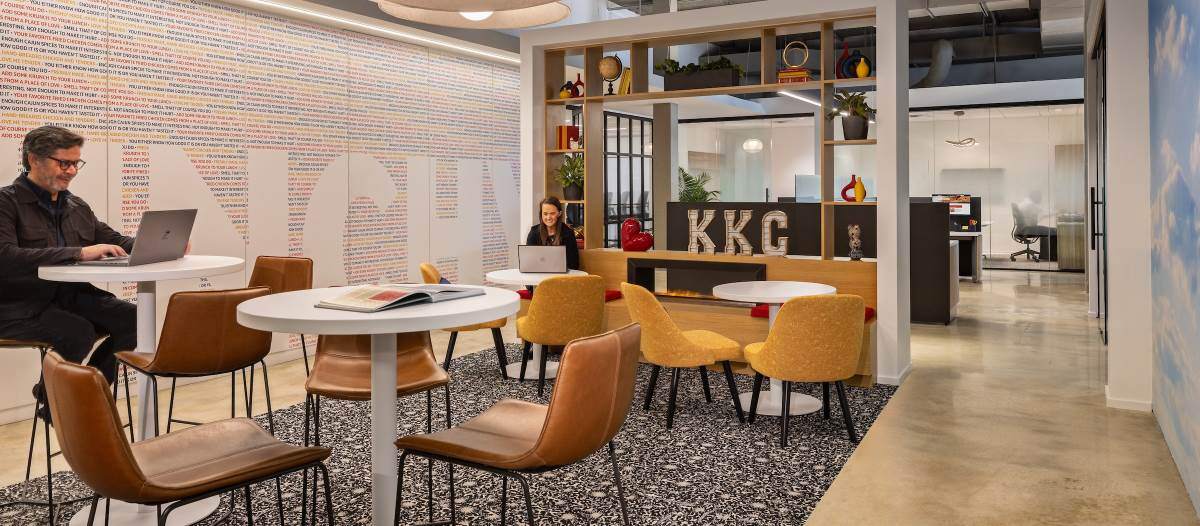The Evolution of Office Occupancy
Making every square foot work smarter, not harder

The traditional concept of office occupancy is undergoing a significant transformation. Widespread adoption of flexible work arrangements, initially driven by the COVID-19 pandemic, has led to a fundamental shift in how employees interact with their physical workspaces.
As remote work options and flexible schedules have become increasingly prevalent, facility managers face the pressing challenge of understanding and optimizing office space utilization and return on investment. In addition, 90 percent of companies say they will return to the office by the end of 2024, representing a major investment need for businesses in terms of planning, staffing, on-site amenities and programs. The ability to analyze and understand these fluctuating dynamics and plan accordingly to optimize office space utilization, drive sustainability and maximize ROI, is an important business metric.
New complexities
The shift toward hybrid work models has introduced a new layer of complexity for FMs, fundamentally altering office space management. These complexities extend beyond mere headcounts to understanding the qualitative aspects of space usage. With employees having the flexibility to choose when they come to the office, their reasons for doing so have shifted.
FMs must consider how to design spaces that facilitate spontaneous interactions, support various types of collaborative work and still provide quiet areas for focused individual tasks. This requires a deep understanding of employee work patterns and preferences, which can vary widely across teams and individuals. The challenge is compounded by the need to make these spaces flexible enough to accommodate varying group sizes and work styles on different days. This shift demands a reimagining of office layouts and resources.
Unpredictable dynamics make traditional space utilization metrics obsolete. FMs now grapple with a dynamic environment where occupancy can fluctuate dramatically from day to day or even hour to hour. Additionally, optimizing office spaces for collaboration presents a unique challenge without clear insights into when and how employees choose to collaborate on site.
The provision of on-site amenities has become a delicate balancing act. In a hybrid model, amenities play a crucial role in attracting employees to the office and enhancing their experience when they are there. However, the irregular usage patterns make it difficult to justify the cost of high-end amenities that may sit idle for significant periods. FMs must carefully assess which amenities provide the most value in terms of employee satisfaction and productivity, while also considering their utilization rates, operational costs and sustainability.
A new era of data management
What this all boils down to is traditional methods like manual headcounts or fixed schedules are no longer sufficient to manage the volatilities of office occupancy. The implementation of sophisticated data collection and analysis systems is required to accommodate the blend of remote and on-site work.
FM must invest in and integrate advanced technologies such as automatic employee check-in via access control or Wi-Fi system integrations, IoT sensors and AI-driven predictive analytics. These tools can provide real-time occupancy data and help forecast future space needs. However, they also require significant investment and ongoing management. FMs must be adept at interpreting data, predicting trends and quickly adjusting strategies to meet the ever-changing needs of a flexible workforce. The implementation of new technologies can help streamline work for FM teams, where they can make space planning decisions confidently with relevant data directly integrated into their everyday workflows.
The dynamic nature of hybrid work also requires FMs to be more agile in their resource allocation. With occupancy levels fluctuating unpredictably, managers must develop strategies to quickly scale resources up or down. This might involve flexible furniture solutions, modular office layouts or on-demand services that can be activated as needed. The challenge lies in striking a balance between having enough resources available to meet peak demand and avoiding waste during periods of low occupancy.
Feedback mechanisms
To address these challenges, many organizations are implementing feedback mechanisms and conducting regular surveys to understand employee preferences and behaviors. Some are even using pilot programs to test different office configurations before making large-scale changes. These approaches can help FMs make more informed decisions about office design and resource allocation.
Leveraging workplace occupancy data is pivotal for modern FM. By harnessing this data, FMs can achieve enhanced operational efficiency, sustainability and employee satisfaction within office environments. Occupancy data provides valuable insights for optimizing space utilization, adapting resources to fluctuating demands and designing collaborative environments conducive to innovation and productivity.
A wealth of benefits
By leveraging workplace analytics, organizations can make informed decisions regarding employee presence, space utilization and resource allocation. This allows them to optimize their workspace design, improve efficiency and enhance employee satisfaction. Data-driven insights can inform decisions regarding the allocation of on-site amenities, meeting spaces and collaborative areas, further improving the employee experience.
Moreover, this approach fosters a culture of experimentation, learning and adaptation. By piloting changes and gathering feedback for continuous improvement, organizations can ensure they are making informed decisions and implementing changes that effectively support their goals and objectives.
As the workplace continues to evolve, FMs must adapt their strategies to meet the challenges of flexible work arrangements. By leveraging workplace occupancy data and implementing data-driven solutions, organizations can create more efficient, productive and satisfying work environments that meet the needs of today's dynamic workforce.
The implications of these changes extend beyond the office walls. The shift away from traditional office occupancy patterns is affecting urban centers, potentially leading to changes in transportation patterns, local business ecosystems and even housing preferences as some workers choose to live further from city centers. While companies may save on real estate costs with reduced office space, there are new expenses to consider, such as investing in remote work technologies, enhancing cybersecurity for distributed teams and potentially subsidizing home office setups for employees.
Flexible work arrangements also bring new complexities in areas such as workplace safety regulations, data security and performance management. Human Resources departments are adopting policies to address these new realities; but the long-term impact of these changes remains uncertain. Some experts predict a gradual return to more traditional office use, while others foresee a permanent shift toward more flexible, distributed work models. Companies need to remain adaptable and responsive to evolving trends and employee preferences.
In this era of work, the key to success lies in embracing flexibility, leveraging data and continually adapting to meet the changing needs of both employees and organizations. By doing so, FMs can create workplaces that are not only more efficient and sustainable but also more conducive to innovation, collaboration and employee satisfaction.
Jonathan Weindel is the head of data analytics at Envoy where he gets to show off his passion for creating data-driven insights, tools and applications every day.
Read more on Workplace , Occupancy & Human Factors and Real Estate
Explore All FMJ Topics









